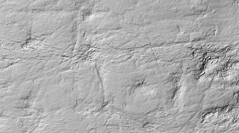

 Comptes Rendus Palevol
18 (8) - Pages 1083-1094
Comptes Rendus Palevol
18 (8) - Pages 1083-1094Spy I from the Meuse River Basin of Belgium is among the most recent Neandertals. This adult lived at the terminus of Marine Isotope Stage (MIS) 3 in cold steppe environments at the northern edge of the habitable zone for Neandertals where plants were relatively scarce. The dietary proclivities of Spy I are reconstructed using dental microwear texture analysis and compared to 33 Neandertals from western Eurasia, MIS 5 to MIS 3. Spy I has an elevated enamel surface complexity suggesting the consumption of course dietary items such as wild seeds, acorns, nuts, and underground storage organs laden with particles of grit. Unlike the young and old individuals from Hortus with low values for anisotropy, Spy I is closest to the adults from this site suggesting a common pattern of masticatory behavior typified this life cycle stage. Like many other Neandertals, Spy I probably consumed plant foods at appreciable levels, some of which were hard and brittle or poorly processed.
Neandertal, Meuse Basin of Belgium, MIS 3, complexity, anisotropy